Understanding Elementary Shapes Class 6 Worksheet Maths Chapter 5
MCQs
Q1: Which type of triangle has two sides of equal length?
(a) Equilateral triangle
(b) Isosceles triangle
(c) Scalene triangle
(d) Right-angled triangle
Q2: How many bases does a trapezium have?
(a) 1
(b) 2
(c) 3
(d) 4
Q3: What is the measure of each angle in an equilateral triangle?
(a) 60°
(b) 90°
(c) 120°
(d) 180°
Q4: What type of angle is exactly 180°?
(a) Acute angle
(b) Right angle
(c) Straight angle
(d) Reflex angle
Q5: Which type of triangle has all sides of different lengths?
(a) Equilateral triangle
(b) Isosceles triangle
(c) Scalene triangle
(d) Right-angled triangle
Types of Triangles
Q6: Identify the following triangles according to the measurement of sides and angles given. Also mention the type of triangle: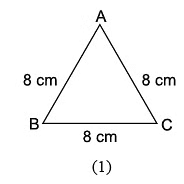
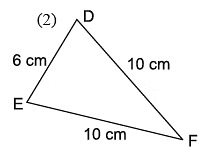
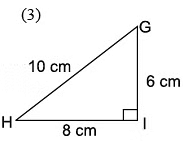

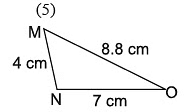
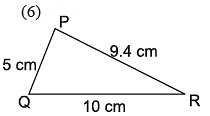
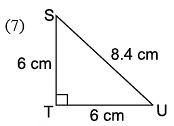
Fill in the Blanks
Q7: Each angle of a rectangle is a ____________ angle.
Q8: ____________ sides of a rhombus are of equal length.
Q9: In a ____________, there is only one pair of parallel sides.
Q10: The ____________ sides of a rectangle are equal in length.
Q11: A rhombus with four right anlges is called a ____________.
Q12: The polygon with least number of sides is ____________.
Answer the following Questions
Q13: Complete the following table:
(One is done as example-sphere)
Shape | Example | Number of faces | Number of vertices | Number of Edges | |
(1) | Cuboid | — | — | — | — |
(2) | Cube | — | — | — | — |
(3) | Triangular pyramid | — | — | — | — |
(4) | Sphere | Football | No face | No vertex | No edge |
Q14: In the given figure, name the following angles as acute, obtuse, right, straight or reflex.
(a) ∠QOY
(b) ∠YOP
(c) ∠ROX
(d) ∠QOX
(e) ∠POQ
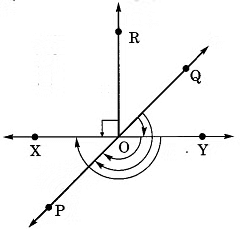
Q15: Match the column B with A and C:
| A | B | C |
| (a) Straight angle | (i) An angle whose measure is less than 90°. | (f) One fourth of a revolution. |
| (b) Right angle | (ii) An angle whose measure is between 90° and 180°. | (g) Half of a revolution. |
| (c) Acute angle | (iii) An angle whose measure is 180°. | (h) More than half a revolution |
| (d) Obtuse angle | (iv) An angle whose measure is 90°. | (i) Less than one-fourth of a revolution. |
| (e) Reflex angle | (v) An angle whose measure is between 180° and 360°. | (j) Between ¼ and ½ of a revolution. |
For example (a) → (iii) → (g)
Q16: A sailor is rowing a boat due north. In which direction will he be rowing if he turns it through (i) a straight angle (ii) a complete angle
Q17: You are standing in a class-room facing north. In what direction will you be facing after making a quarter turn in clockwise direction?
Q18: Write five capital letters of the English alphabet which show perpendicular lines/line segments.
Q19: Number of right angles turned by the hour hand of a clock when it goes from 3 to 6.
Q20: How many line segments are used in making a triangle?
You can access the solutions to this worksheet here.
FAQs on Understanding Elementary Shapes Class 6 Worksheet Maths Chapter 5
| 1. What are the basic properties of geometric shapes taught in elementary education? |  |
| 2. How can I help my child recognize different shapes at home? |  |
| 3. What are some common geometric shapes that children should learn? |  |
| 4. How do shapes relate to real-world objects? |  |
| 5. What activities can reinforce shape recognition skills in elementary students? |  |

















